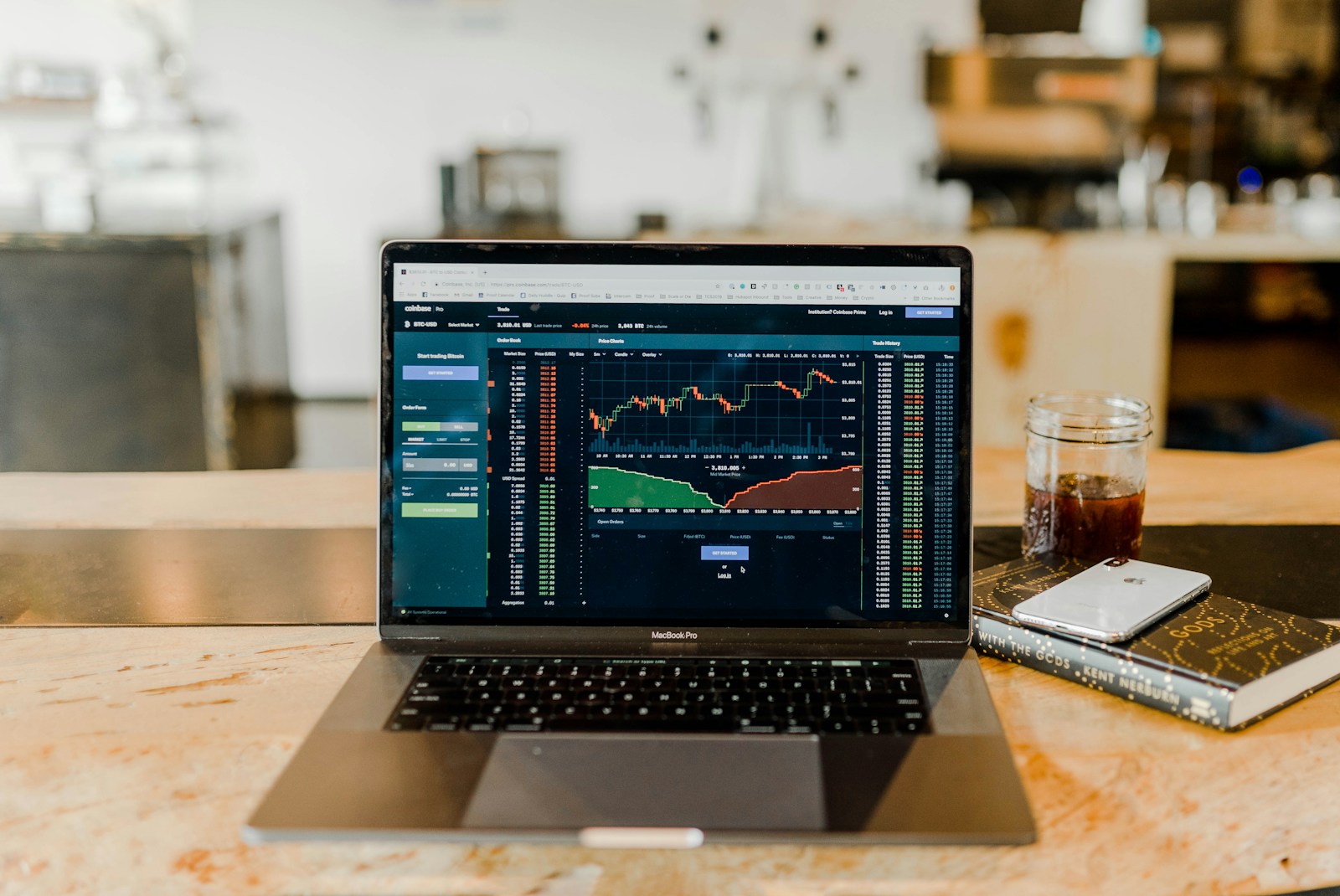
Recognizing a fakeout early can save significant losses. When a price crosses a key level but fails to sustain momentum, it often signals a deceptive surge rather than genuine continuation. Volume analysis plays a pivotal role here–low or declining volume during the move typically indicates weak conviction behind the breakout, increasing the likelihood of reversal.
Recent market data shows that over 40% of apparent breakouts retrace within hours, catching many traders off guard. For example, in March 2024, several tech stocks exhibited sharp upward moves on thin volume only to collapse shortly after. Such scenarios highlight the necessity of confirming price action with supporting metrics before committing capital.
Technical setups combining volatility contractions with volume spikes tend to filter out misleading signals more effectively. Integrating multiple indicators reduces false positives and enhances entry accuracy. Have you considered how failed breakout patterns impact your risk management? Adjusting stop-loss placement around these zones can mitigate drawdowns significantly.
Ultimately, disciplined interpretation prevents costly mistakes tied to illusory trend continuations. By scrutinizing both price behavior and associated trading activity, one gains clarity on whether a move represents genuine strength or just an ephemeral shakeout designed to trigger premature exits.
Identifying and Managing Illusory Price Movements in Market Analysis
Successful market participants prioritize recognizing misleading price surges that fail to sustain momentum beyond key resistance or support levels. Such deceptive movements often lure investors into positions that result in significant capital loss. A thorough examination of volume patterns is indispensable; genuine price advances are typically accompanied by a marked increase in traded volume, confirming the strength behind the move. Conversely, lackluster volume during these spikes frequently signals potential reversals.
Historical data from Bitcoin’s 2021 trading sessions illustrate this phenomenon vividly: on several occasions, rapid upward moves breaching $60,000 were quickly negated as volume did not confirm buyer enthusiasm, leading to sharp corrections exceeding 10%. This highlights the necessity of integrating multi-timeframe analysis and order book depth studies before committing to trades based solely on breakout attempts.
Technical Indicators and Market Signals for Reliable Entry Points
Utilizing complementary technical tools enhances precision in distinguishing authentic from deceptive market advances. For instance, the Relative Strength Index (RSI) divergence often precedes unsustainable price surges; if RSI fails to confirm new highs alongside price, traders should exercise caution. Moreover, monitoring On-Balance Volume (OBV) can reveal whether increased buying pressure supports the breakout or if it stems from transient speculation.
The case of Ethereum’s mid-2022 rally demonstrates this well: despite price surpassing $3,000 briefly, OBV remained flat and RSI indicated overbought conditions, foreshadowing a swift retracement. Incorporating such indicators into an analytical framework reduces exposure to ill-timed entries triggered by fleeting price moves without fundamental backing.
Market structure analysis also plays a critical role. Breakouts occurring near major psychological thresholds or long-standing horizontal levels require confirmation through retests and consolidation phases. Failure to observe sustained price action above these zones usually indicates a lack of conviction among participants and suggests heightened risk for whipsaw effects.
In summary, prudent market actors integrate volume scrutiny, momentum oscillators, and structural confirmations to filter out misleading upward or downward thrusts effectively. This methodology significantly diminishes unnecessary losses arising from premature position entries during ephemeral surges lacking substantive follow-through. Continuous adaptation to evolving liquidity conditions further refines decision-making accuracy amidst volatile asset classes like cryptocurrencies.
Identifying Fakeout Patterns in Market Movements
Recognizing deceptive surges beyond established support or resistance levels is critical for minimizing losses. One key indicator is a mismatch between price movement and transaction volume: genuine advances typically coincide with a significant increase in volume, while misleading surges often occur on thin trading activity. For example, during Bitcoin’s April 2023 rally, sharp price jumps without corresponding volume spikes signaled potential traps for uninformed participants.
Detailed chart analysis reveals that fakeouts frequently reverse quickly after breaching key zones, leaving traders exposed to sudden downturns. Monitoring candlestick patterns such as long upper wicks or doji formations near breakout points can provide clues about market indecision. In Ethereum’s May 2023 fluctuations, these reversal signals were apparent before the rapid retracement occurred, underscoring their importance in pattern recognition.
Volume Confirmation and Momentum Assessment
Volume acts as a confirming metric to validate whether a move beyond critical thresholds is sustainable or merely a manipulation attempt. A steady increase in cumulative volume supports continuation scenarios, whereas declining or stagnant volume suggests waning interest behind the move. This principle was evident during Solana’s August 2023 episode when an initial surge lacked robust volume backing and quickly reverted, highlighting the necessity of comprehensive volume analysis.
Momentum oscillators like RSI and MACD further refine entry decisions by indicating overbought or oversold conditions coinciding with breakout attempts. Divergences between price action and momentum indicators often precede retractions from false surges. Case studies from Binance Coin in late 2023 demonstrate how ignoring such divergences led to premature entries before swift pullbacks.
- Evaluate transaction volumes relative to recent averages before confirming breakout validity;
- Analyze candlestick morphology around threshold breaches for signs of market hesitation;
- Cross-reference momentum indicators to detect potential exhaustion of buying or selling pressure.
Employing this multi-dimensional approach minimizes exposure to costly misjudgments caused by deceptive market moves. As seen across multiple altcoins during volatile periods, reliance on single metrics often results in costly missteps, whereas integrated analysis provides clearer insight into genuine price shifts versus ephemeral distortions.
Volume signals to confirm breakouts
Reliable confirmation of a breakout requires a significant increase in volume accompanying the price movement. Volume acts as a validation metric, distinguishing genuine momentum shifts from mere price fluctuations or fakeout scenarios. For instance, when Bitcoin’s price surpassed the $30,000 resistance level in early 2024, trading volume surged by over 45% compared to its 20-day average, signaling strong buyer conviction and reducing the likelihood of a subsequent reversal.
Conversely, breakouts with low or declining volume often indicate weak participation and higher risk of retracement. Analysis of Ethereum’s price action around $2,000 in March 2024 revealed several upward moves that failed to sustain due to insufficient volume support. These events serve as cautionary examples where volume divergence highlighted potential traps for traders expecting sustained rallies without market-wide endorsement.
Understanding volume patterns during breakouts
Volume spikes aligned with key technical levels–such as previous highs or consolidation boundaries–strengthen the legitimacy of breakout attempts. A classic case occurred with Binance Coin (BNB) in January 2024: after months of sideways movement between $350-$400, a breakout above $400 was accompanied by a doubling of daily traded volume, confirming institutional interest rather than retail-driven hype. This alignment between price and volume confirms commitment from market participants and reduces susceptibility to fakeout moves.
On the other hand, subtle increases in volume without clear acceleration often precede pullbacks or false surges. Traders should monitor volume relative to moving averages or use tools like the Volume Weighted Average Price (VWAP) to assess whether activity supports continued directional movement. Incorporating these quantitative benchmarks into analysis helps avoid costly errors linked to premature entries on unconfirmed breakouts.
Using Support and Resistance Levels
Identifying key support and resistance zones is fundamental for recognizing authentic price movements versus misleading surges in cryptocurrency markets. These levels act as psychological barriers where asset prices historically reverse or stall, providing traders with crucial decision points. For example, when Bitcoin approaches a $30,000 resistance level multiple times without sustaining an upward trend, it signals strong selling pressure. A surge above this threshold on low volume often indicates a fakeout, which can lure market participants into premature positions.
Volume analysis plays a pivotal role in confirming the validity of price moves near these critical areas. Genuine advances beyond support or resistance are typically accompanied by a significant increase in trading volume, reflecting broad participation. Conversely, thin volume spikes usually precede rapid reversals, suggesting that the breakout lacks conviction and may lead to costly misjudgments. This pattern was evident during Ethereum’s brief rally past $2,500 in early 2024, where volume failed to sustain gains and prices quickly retreated below support.
Recognizing Illusory Movements Through Volume and Price Action
One effective method to differentiate between true market shifts and misleading surges is analyzing candle structures around support and resistance points. Sharp wick formations or quick retracements after initial breakout attempts often reveal the presence of traps set by stronger hands aiming to induce impulsive entries from less experienced traders. In March 2023, Binance Coin’s attempt to break through $350 exhibited long upper wicks combined with declining volume–classic signs of a deceptive move.
Integrating multi-timeframe analysis enhances reliability when assessing these levels. Shorter intervals might display apparent breakthroughs that vanish on higher timeframes, indicating transient market noise rather than sustainable trends. For instance, intraday charts could show temporary breaches of support followed by swift recoveries on daily charts, cautioning against hasty trades based solely on short-term data.
A practical strategy involves waiting for confirmation beyond support or resistance zones before committing capital. Confirmation may take the form of consecutive closes above resistance with increasing volume or retests that hold previously broken levels as new support or resistance. This approach reduces exposure to premature entries driven by fake breakouts, minimizing potential losses linked to volatile price swings common in crypto assets like Solana or Cardano during periods of heightened uncertainty.
Historical case studies reinforce these principles; for example, Litecoin’s dramatic surge beyond $150 in late 2023 initially appeared promising but soon reversed due to insufficient follow-through volume and failure to maintain above the resistance line upon retesting. Employing such lessons helps traders refine entry timing and risk management by acknowledging that not every upward movement past a known level signifies sustained momentum.
Stop-loss placement strategies
Effective stop-loss positioning requires a nuanced approach that takes into account recent price behavior and volume dynamics to minimize losses from deceptive market moves. Instead of placing stops too close to the entry point, which often results in premature exits during minor price retracements, traders should analyze support and resistance zones shaped by historical data and intraday volume spikes. For example, positioning a stop just below a well-tested support area with increased trading volume can reduce the likelihood of being stopped out by transient downward fluctuations.
Volume analysis plays a critical role in determining the reliability of price movements and helps differentiate genuine continuations from misleading signals. Consider a scenario where an asset breaks above a resistance level but on low volume; this could signal lack of conviction and potential reversal rather than sustained momentum. Placing stop-loss orders below such critical levels, adjusted for average true range (ATR), allows protection without prematurely liquidating positions on these deceptive surges.
Adaptive techniques for dynamic markets
Market volatility demands flexible stop placement rather than static thresholds. One common method involves using technical indicators like the ATR to calculate dynamic stop distances relative to current volatility, ensuring stops are neither too tight nor overly loose. For instance, if the ATR indicates daily volatility at 3%, setting stops at 1.5–2 times this value accounts for typical price swings while safeguarding against outsized declines triggered by erratic spikes often seen around major announcements or thin liquidity periods.
A case study from late 2023 involving Bitcoin showed that during rapid rallies accompanied by sudden drop-offs in volume, rigid stops placed near breakout points led to multiple forced exits before prices resumed upward trends. Traders who incorporated trailing stops based on ATR or moving averages successfully captured gains while preventing deep drawdowns caused by these short-lived reversals.
Psychological factors also influence optimal stop placement. Excessively tight stops may lead to frequent small losses that erode confidence, whereas overly wide stops increase downside risk unnecessarily. Balancing this trade-off involves backtesting strategies over multiple timeframes and market environments to identify sweet spots that align with individual risk tolerance and asset volatility profiles.
The interaction between order book depth and stop clustering is another element worth monitoring. Areas with concentrated pending orders can trigger temporary price reactions when executed en masse, potentially activating clustered stops prematurely. Awareness of such zones through Level II data analysis enables strategic adjustment of exit points, avoiding costly whipsaws that may appear as convincing trend confirmations but ultimately reverse sharply once liquidity absorbs initial pushes.
Timeframes for Breakout Validation
Validating a breakout requires selecting an appropriate timeframe that aligns with the asset’s volatility and market activity. Short-term charts, such as 5-minute or 15-minute intervals, often generate numerous signals, but many of these fail to sustain momentum due to insufficient volume. For example, during a recent Bitcoin price surge in April 2024, several intraday breakouts were invalidated within minutes as volume dropped below average thresholds of 30% above the mean daily turnover. Relying solely on these brief timeframes can lead to costly mistakes and misinterpretation of market moves.
Longer timeframes provide more reliable confirmation by filtering out noise inherent in lower intervals. Daily and 4-hour charts incorporate broader market sentiment and aggregate transaction data that better reflect genuine interest behind price moves. In Ethereum’s case, a confirmed breakout on the daily chart during March 2024 accompanied by a volume spike exceeding 50% above the preceding week indicated sustainable upward pressure. This contrasts sharply with fleeting spikes seen on hourly charts where volume remained flat or decreased, signaling potential traps for those prioritizing speed over quality.
Volume as a Crucial Factor in Timeframe Selection
Volume analysis remains indispensable across all timeframes but gains particular significance when validating breakouts on mid-to-long term charts. A surge in volume that supports price movement typically distinguishes credible patterns from deceptive ones. For instance, Litecoin experienced a sharp rally in late February 2024 where the hourly chart suggested a breakout; however, total traded volume during this interval was only marginally higher than average daily levels, indicating weak conviction. Conversely, analyzing the same move on the daily timeframe revealed cumulative volume growth of over 40%, confirming genuine accumulation rather than manipulation.
To minimize losses related to unreliable entries, it is prudent to combine multiple timeframe analyses–a method known as multi-timeframe validation. Traders might observe initial signals on lower periods but seek confirmation on higher frames before committing capital. Consider Binance Coin’s performance in early May 2024: intraday breakouts signaled entry points but were only taken seriously once corresponding daily candles closed above resistance zones with accompanying volume surges exceeding historical averages by at least 35%. This approach reduces exposure to misleading setups triggered by transient volatility spikes.
Avoiding premature decisions requires patience and discipline–waiting for candle closes and volume consistency across relevant periods helps reduce misjudgments caused by ephemeral fluctuations. Incorporating technical indicators like On-Balance Volume (OBV) or Volume Weighted Average Price (VWAP) alongside price action also enhances accuracy. Ultimately, balancing responsiveness with rigor determines whether one navigates market dynamics effectively or succumbs to costly errors linked to deceptive price movements.
Conclusion: Avoiding Costly Pitfalls in Market Movements
Focus on verifying volume confirmation before acting on price surges beyond established resistance or support levels. A surge lacking corresponding volume often signals a deceptive rally, misleading many into premature entries that quickly reverse. For example, during Q1 2024, several altcoins exhibited upward spikes with minimal volume increases, resulting in swift retracements and considerable losses for traders who mistook these for genuine market shifts.
Distinguishing authentic momentum from misleading signals requires integrating multiple technical indicators–such as Relative Strength Index (RSI), Moving Average Convergence Divergence (MACD), and order book depth–rather than relying solely on price action. Ignoring this holistic approach frequently leads to misreading market sentiment and suffering drawdowns that could have been mitigated by disciplined confirmation protocols.
Key Technical Insights and Strategic Recommendations
- Volume validation: Prioritize entries when volume exceeds average daily norms by at least 30%, indicating substantial trader commitment rather than sporadic speculation.
- Pattern recognition: Identify classic reversal formations like double tops or bearish divergences preceding suspicious surges to avoid traps.
- Wait for retests: Genuine moves often retest breakout zones with sustained support; failure here is a red flag against impulsive positioning.
- Leverage limit orders: Mitigate slippage risk by setting precise entry points aligned with confirmed breakout levels instead of chasing the market.
The implications extend beyond individual trades–misinterpreting these movements can amplify portfolio volatility and erode long-term capital growth. As automated trading algorithms increasingly factor in volume-spike patterns, human traders must refine their filters to separate noise from true signals effectively. The rise of AI-driven market makers means that superficial price jumps without robust backing will become even more frequent as liquidity providers exploit retail impatience.
Looking ahead, advancements in blockchain analytics–such as real-time on-chain activity tracking combined with off-chain order flow data–promise greater transparency around genuine demand shifts versus orchestrated pump attempts. Adopting these tools will empower participants to sidestep costly missteps linked to deceptive rallies. Can your strategy adapt fast enough to incorporate these next-generation insights? Those who do will gain an edge in filtering out ephemeral spikes and focusing capital on sustainable trends supported by solid fundamentals and corroborative metrics.






